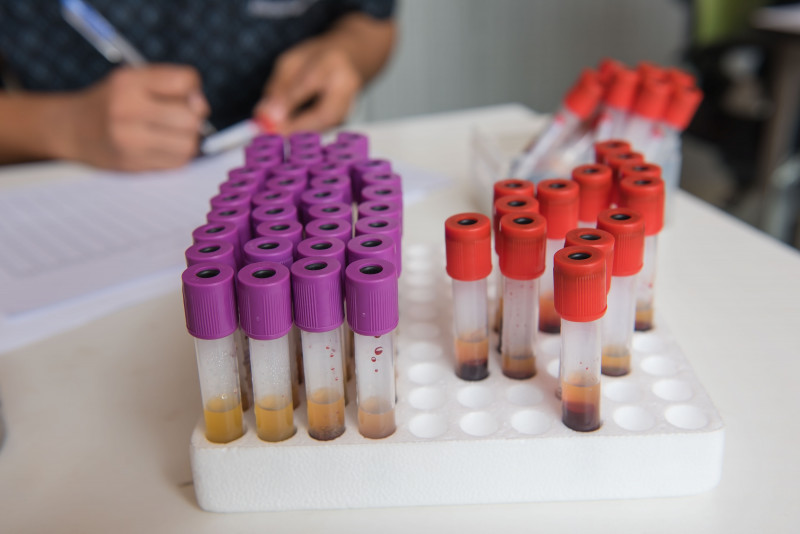Animal Models Can Predict Brineura Doses for CLN2 Patients
Written by |

oatautta/Shutterstock
Animal models predicted dosing of the enzyme replacement therapy Brineura (cerliponase alfa) for patients with late infantile Batten disease, also called CLN2 disease, a study showed.
Scientists said this approach also may be applied to predict cross-species dosing for other similar medicines.
“Overall, the approach described here provides an example of how nonclinical data can be leveraged to streamline clinical development in rare disease,” the researchers wrote.
Monkeys were used in the study in part because, the researchers said, they have a semi-upright posture that results in data “more likely to be representative” of humans.
“Dogs and monkeys were chosen as nonclinical test species because their CNS [central nervous system] and CSF [cerebral spinal fluid] parameters are more similar to humans compared with rodents, including a more complex larger brain and similar rate of CSF turnover,” the team wrote. Of note, the central nervous system is composed of the brain and spinal cord, and cerebral spinal fluid is the clear liquid that surrounds the CNS.
The study, “Dose selection for intracerebroventricular cerliponase alfa in children with CLN2 disease, translation from animal to human in a rare genetic disease,” was published in the journal Clinical and Translational Science.
CLN2 disease, which typically occurs in children ages 2 to 4, is caused by mutations in the TPP1 gene.
Those mutations lead to a deficiency in the enzyme TPP1, which is involved in breaking down protein wastes within cells. In the absence of this enzyme, waste accumulates to toxic levels inside cells, causing their death and the disease’s characteristic symptoms of seizures, vision loss, and progressive cognitive and motor difficulties.
Brineura is an approved CLN2 enzyme replacement therapy, developed by BioMarin, that helps to slow disease progression in patients with late infantile Batten disease. The therapy consists of a form of the TPP1 enzyme that’s used to replace the enzyme missing in patients, by injecting it directly into the fluid of the brain — a procedure known as an intraventricular infusion.
Clinical trials supporting the therapy’s approval demonstrated that it slows the progressive loss of walking ability in children with the inherited disease.
Due to the progressive nature and severity of CLN2, animal models have been used to inform dose selection for human patients. In a process known as allometric scaling, pharmacokinetic data — information on how the medicine moves into, through, and out of the animal body — is used to predict human exposure and dosing.
There is, however, a lack of models in the current literature on how to scale dosing parameters across different species for the direct-to-brain administration of enzyme replacement therapies.
Now, in collaboration with the University of Missouri School of Medicine, scientists at BioMarin described how two allometric scaling approaches — using monkeys and a dog model of CLN2 disease — could predict Brineura exposure to inform human dose selection.
To confirm the predictions, the scientists used human pharmacokinetic data from a Phase 1/2 open-label, dose-escalation trial (NCT01907087) that evaluated Brineura in 24 children with this type of Batten disease.
“This approach to dose translation and human exposure prediction for [Brineura] may be applicable to other [brain and spinal cord-] administered therapies being developed,” the team wrote.
Concentration and time data for Brineura in the cerebrospinal fluid, or CSF, were obtained from cynomolgus (macaque) monkeys. Brineura was administered in increasing doses (5, 14, or 20 mg) in individual monkeys, followed by CSF samples collected during and after infusion for up to 14 days.
CSF concentration samples also were collected from dachshund dogs for seven days, including normal and TPP1-deficient animals, following infusions of 4 and 16 mg of Brineura.
Exposure of Brineura in the CSF following the 16 mg dose in dogs was similar to those found following the 20 mg dose in monkeys.
The mean C-max, the peak concentration of Brineura in the CSF, was 1,460 micrograms per mL (mcg/mL) for dogs, and 1,580 mcg/mL for monkeys. At these doses, the area-under-the-curve (AUC), a measure of total exposure over time, was 6,450 mcg-hour/mL for dogs and 8,670 mcg-hour/mL for monkeys.
Two independent pharmacokinetic models were developed, one for each species. The data best fit a two-compartment model, which referred to a central compartment of tissues with rapid exposure and a peripheral tissue compartment with slower exposure.
Model parameters were then scaled across dogs, monkeys, and humans by brain mass. The average size of the young human brain was assumed to be 1,000 g, due to the progressive brain shrinkage (atrophy) in CLN2 patients. In turn, the average brain size for dogs was set at 50 g, and for monkeys, 65 g.
The 16 mg dose of Brineura in the TTP1 dog was the best dose based on the preservation in cognitive function and brain structure observed following treatment. That dose in dogs translated to a 320 mg dose in humans, while a 20 mg dose in the monkeys translated to a 300 mg human dose.
When scaled from dogs, the predicted C-max in human CSF for a 300 mg dose was 1,090 mcg/mL and an AUC of 11,200 mcg-hour/mL. From monkeys, the predicted human C-max was 1,100 mcg/mL and an AUC of 13,000 mcg-hour/mL.
Compared with pharmacokinetic data from the Phase 1/2 dose escalation trial, the human equivalent dose of 300 mg was within twofold of the observed CSF exposure in both animal models. After scaling by dose, the mean absolute percentage error or MAPE, a measure of prediction accuracy, was 21%, in which values under 20% are considered good predictors.
“The PK [pharmacokinetic] models developed in this study are empirical in nature, and rely on allometric scaling from a large animal model of disease with pharmacologically translatable end points for therapeutic dose and exposure translation to humans,” the researchers wrote.
The scientists said the approach used here provides an example of how, with rare diseases, nonclinical data can be used to streamline clinical development.
It is “a method of dose translation and human CSF exposure prediction that may be applicable to other [brain and spinal cord-] administered therapies being developed,” they wrote.
“This data will be valuable for other central nervous system administered therapies being developed,” the scientists concluded.







